
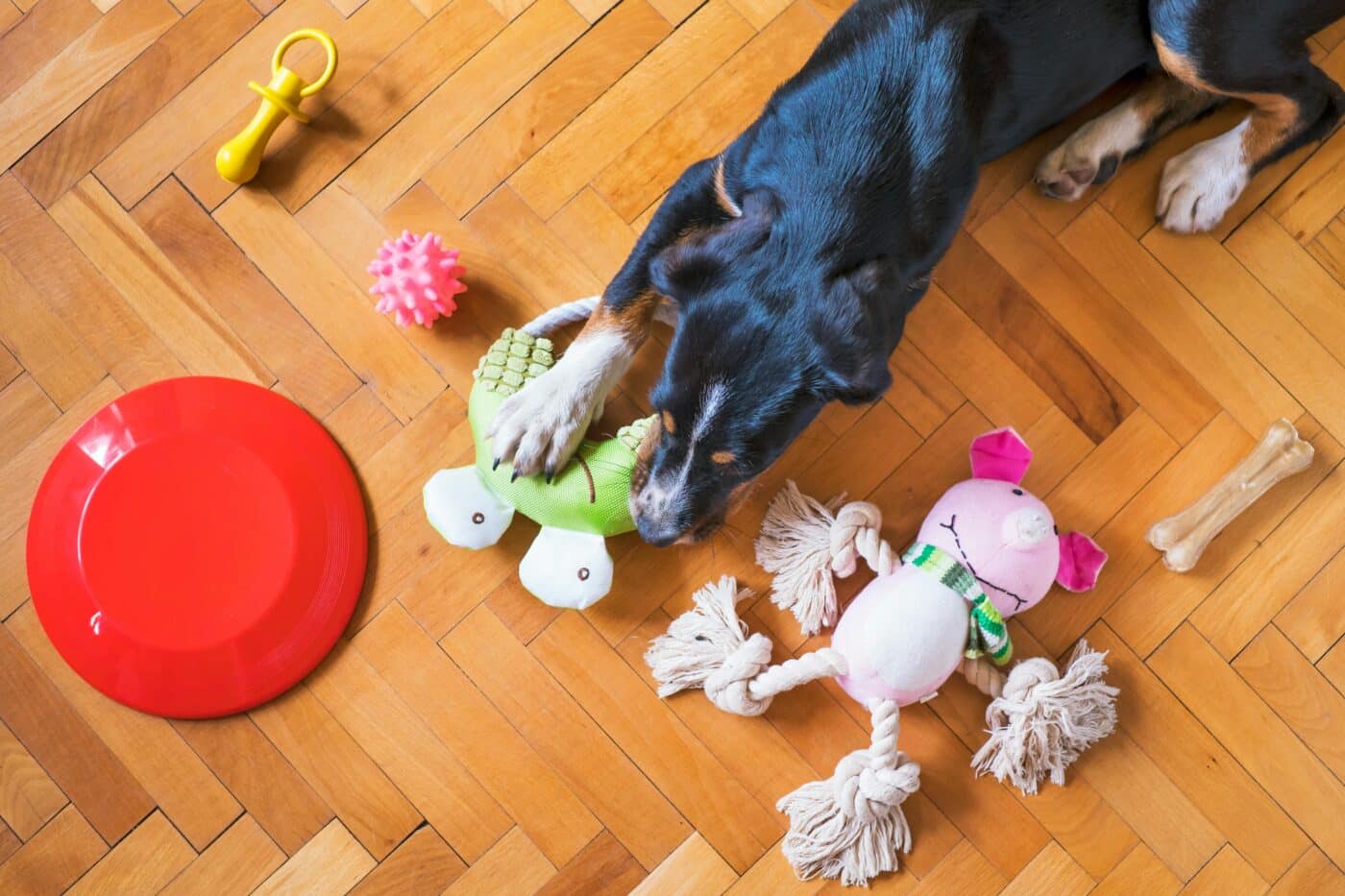
Dogs and toys go hand-in-paw, and any dog owner knows that certain toys hold a special place in their pup’s heart. But what exactly makes some toys irresistible while others are left untouched in the corner? Science shows that a dog’s preference for specific toys isn’t random; it’s deeply rooted in instinct, breed tendencies, and sensory appeal. From squeaky sounds to textures that mimic prey, the factors that make toys irresistible can tell us a lot about a dog’s instincts and unique personality.
The Squeak Effect

One of the primary reasons dogs go crazy for squeaky toys is that the sound mimics the high-pitched noises of prey animals. This taps into a dog’s natural hunting instincts, which are especially strong in certain breeds like terriers and retrievers. When a dog bites down on a squeaky toy, the sound activates their prey drive, stimulating their instincts to capture and “kill.” The squeak offers a satisfying feedback loop, rewarding the dog’s play by replicating the thrill of a hunt. This is why squeaky toys are often among the most popular in a dog’s collection—they speak to their ancestral instincts in a way that silent toys don’t.
Texture Matters
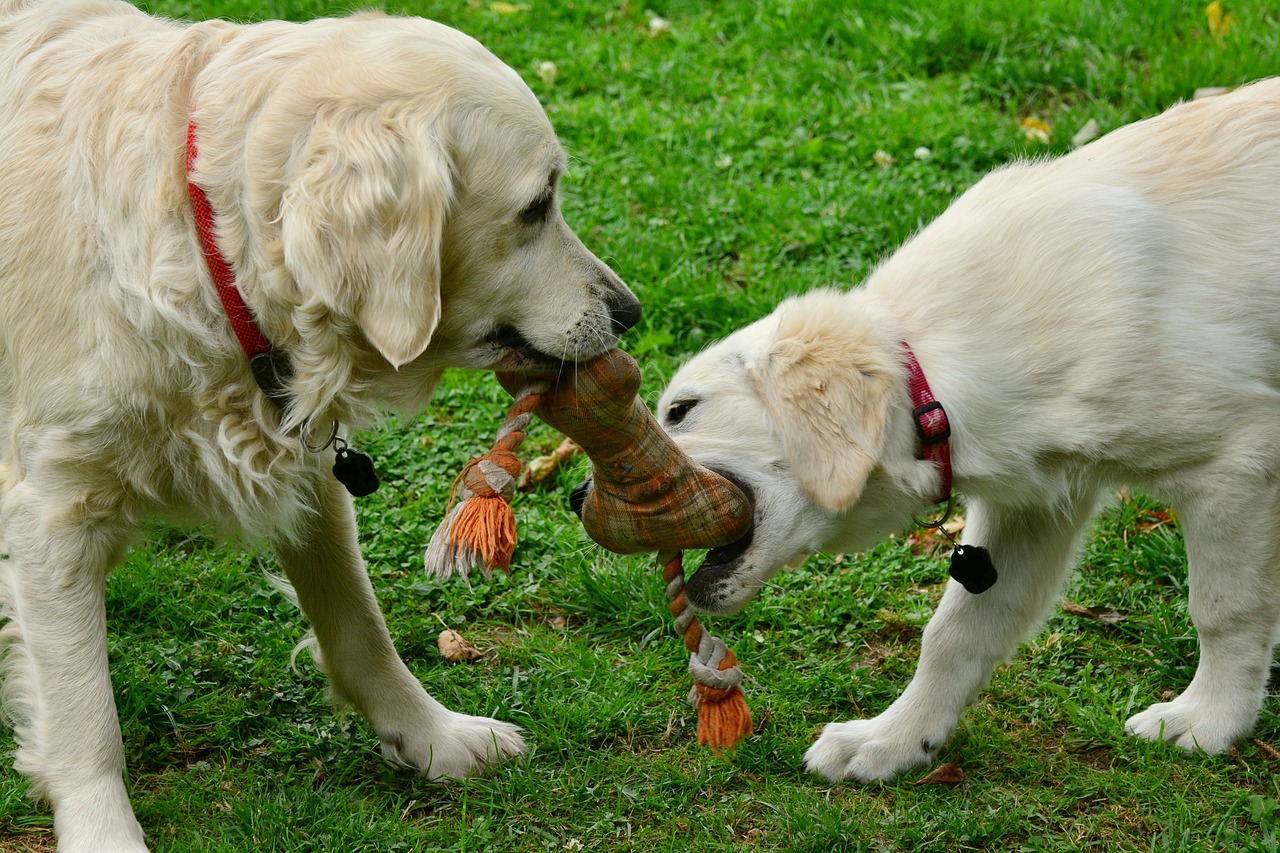
The texture of a toy plays a big role in its appeal to dogs. Soft, squishy, or fuzzy toys mimic the feel of real prey, which dogs find satisfying to bite and carry. Chewy toys, especially those that can be compressed, give dogs a sense of “catching” something alive, making the play experience more realistic and enjoyable. Hard rubber toys like Kongs also satisfy dogs that love chewing, allowing them to gnaw and work their jaws without damaging their teeth. Dogs with a strong chewing instinct, such as Labradors or Pit Bulls, particularly enjoy these textures as they cater to their natural behaviors.
The Power of Smell

Dogs have an extraordinary sense of smell, and toys that engage this sense can become instant favorites. Some toys come scented or can be filled with treats, giving them an extra appeal by engaging a dog’s olfactory senses. Puzzle toys that hold treats or small food rewards encourage dogs to use their nose to locate the source of the scent and their mind to figure out how to access it. This interactive experience is mentally stimulating and highly rewarding, which makes these toys irresistible to most dogs. Scented toys tap into a dog’s natural foraging instincts, keeping them engaged and entertained for extended periods.
Breed-Specific Preferences

A dog’s breed can also influence their toy preferences. Retrievers, for example, have a natural affinity for fetch toys due to their history as hunting dogs trained to retrieve games. Toys that can be thrown, like balls and Frisbees, allow retrievers to engage in the activity they were bred for, making these toys exceptionally satisfying. Similarly, herding breeds like Border Collies and Australian Shepherds may enjoy toys that simulate chasing or herding, such as balls that roll unpredictably. Understanding a dog’s breed-specific instincts can help owners choose toys that best align with their natural behaviors and interests.
Tug Toys and Social Play
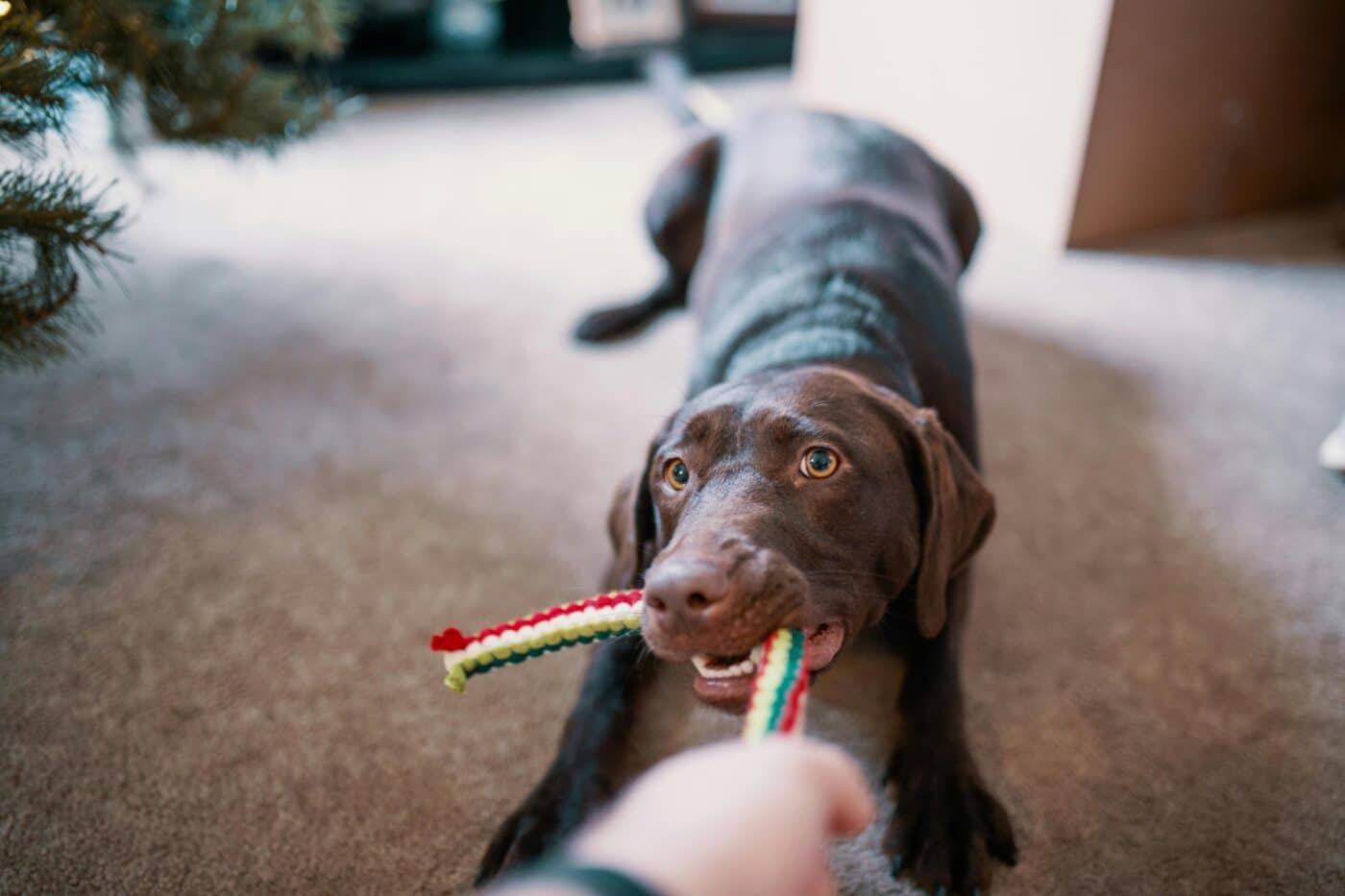
Tug toys are popular with dogs not just because of their texture or durability but also because they promote social interaction. Playing tug-of-war with a dog engages their playful, competitive side and strengthens the bond between dog and owner. The tugging action also simulates the tug-and-pull behavior seen in pack animals, where dogs work together to pull down prey or solve challenges. This type of play is highly stimulating for dogs, particularly those with a strong desire for social interaction. It’s one reason why dogs will often bring tug toys directly to their owners, seeking an interactive game.
Soft Toys as Comfort Objects
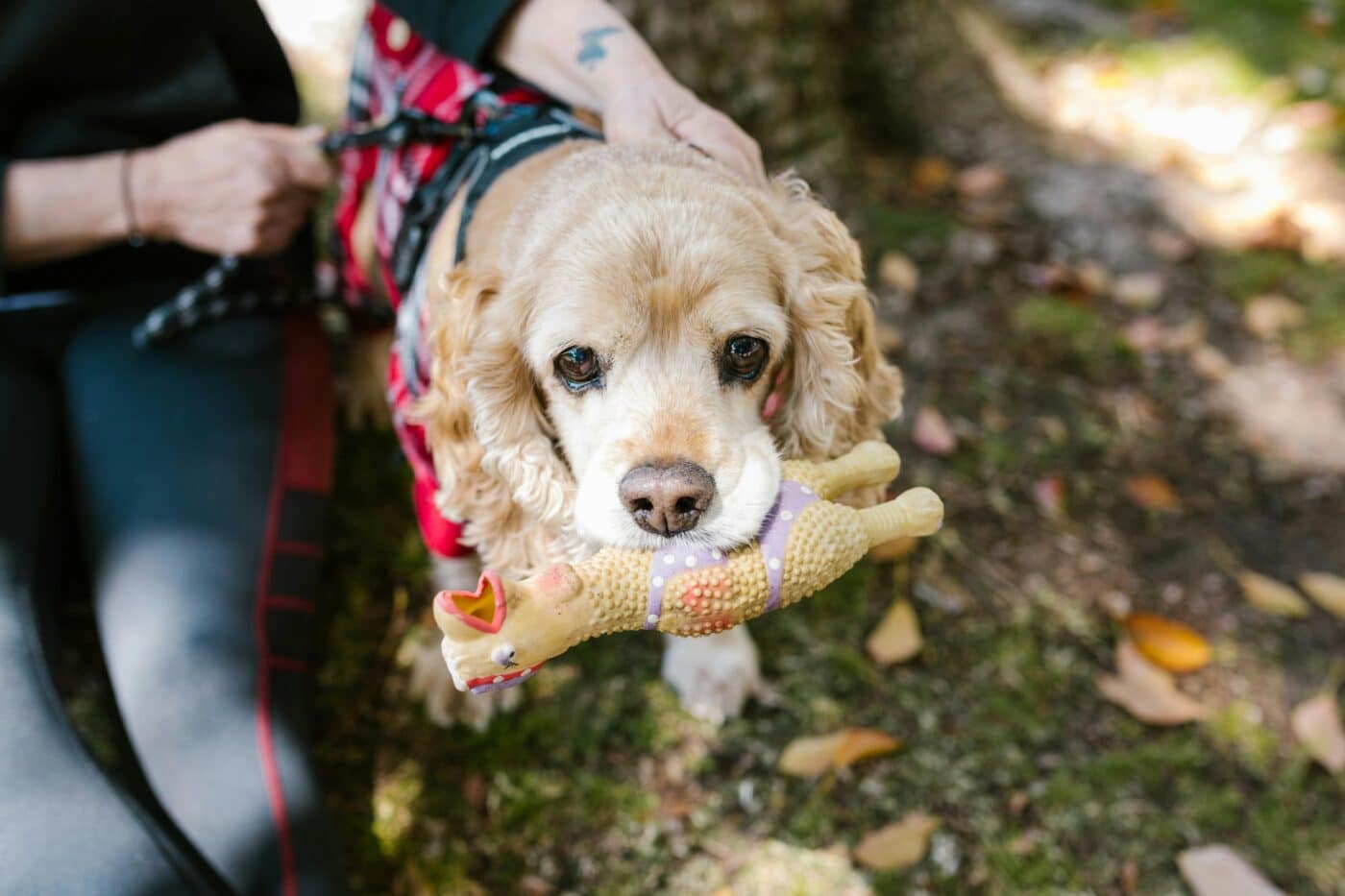
For some dogs, soft toys aren’t just playthings; they’re comfort objects. Dogs can form strong attachments to plush toys, often treating them like surrogate puppies or companions. This behavior is particularly common in breeds with a nurturing instinct, such as Golden Retrievers. Carrying, grooming, or snuggling with a soft toy can mimic the caring behavior that mother dogs show toward their young. For dogs with anxiety, a soft toy can provide reassurance and comfort. So, if you see your dog carrying their favorite plush around the house, it may be less about play and more about emotional security.
The Appeal of Toys That Mimic Real Movement
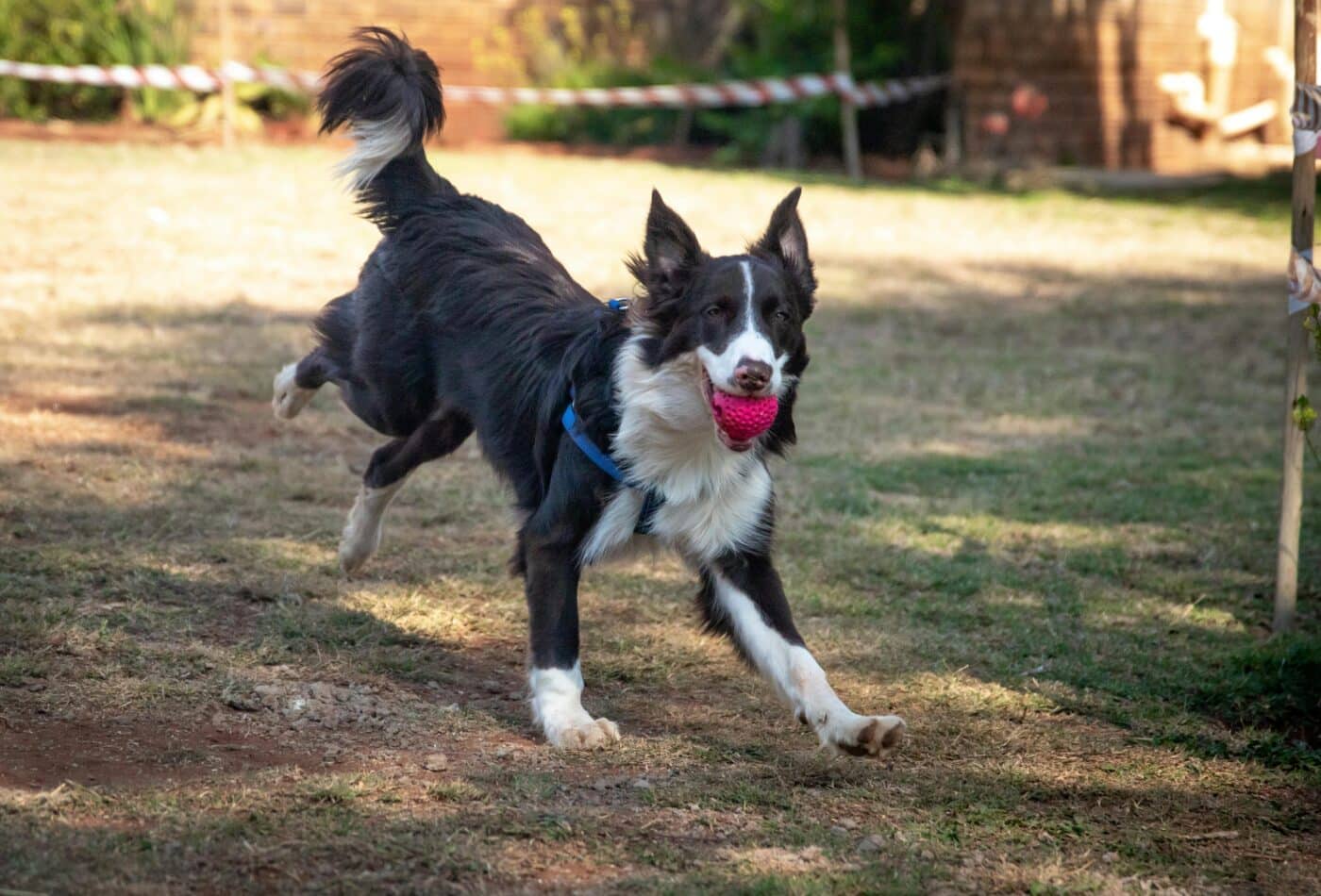
Some toys are designed to mimic the unpredictable movements of small animals, which can be highly exciting for dogs. Toys that bounce irregularly or roll in unexpected directions engage a dog’s chase instinct, making them more intriguing than toys that are stationary or predictable. Many dogs, especially those with strong hunting or herding instincts, find these toys captivating because they simulate the movement of prey animals. Toys that roll, wiggle, or bounce randomly are perfect for dogs who love a good chase, as they provide the thrill of “catching” something on the move.
Two Reasons Dogs Might Ignore Certain Toys
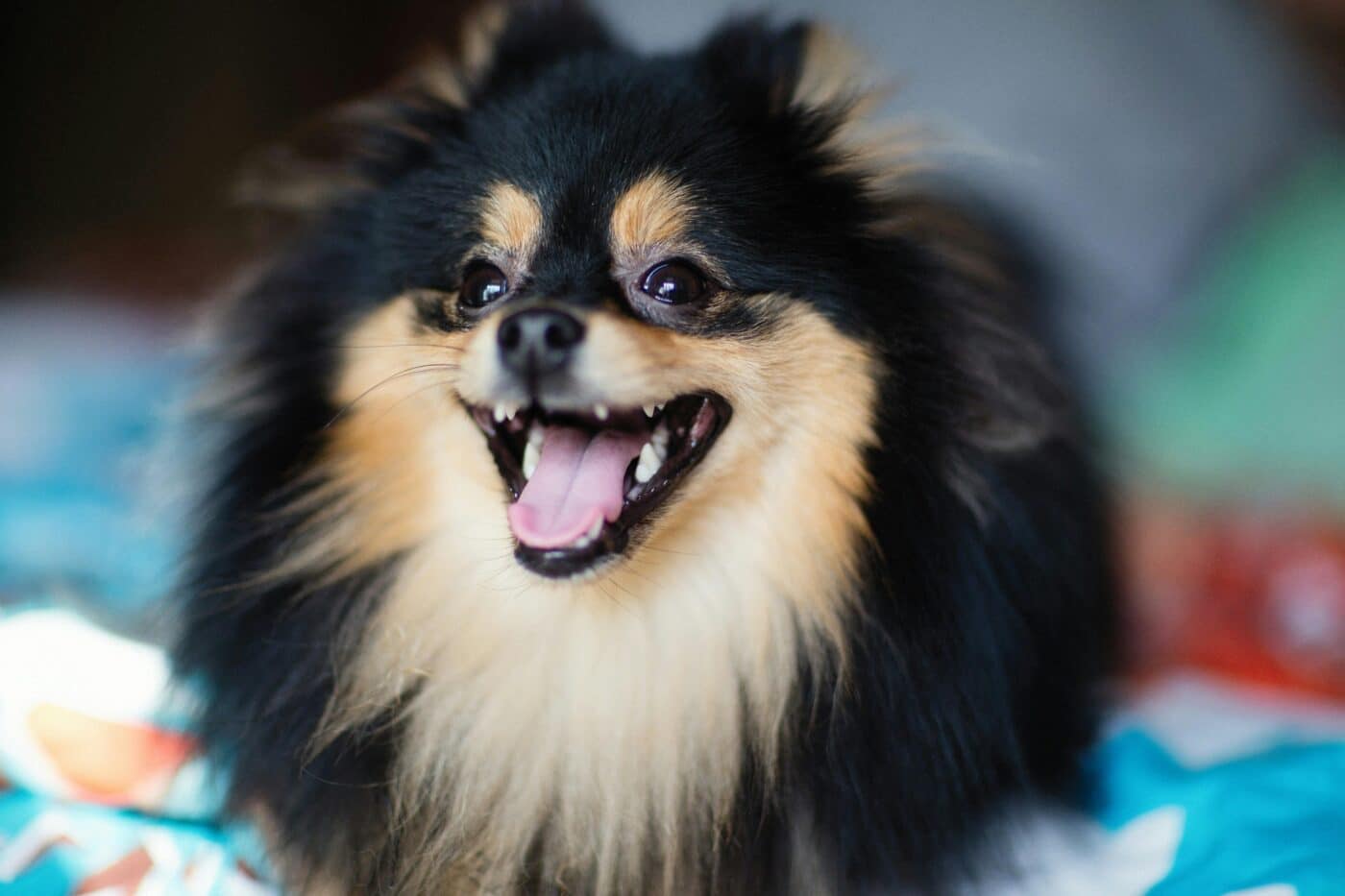
Dogs, known for their playful and energetic nature, often have a range of toys scattered around that provide entertainment and stimulation. Yet, as many dog owners know, not all toys are created equal in their dog’s eyes. Some toys are showered with affection and playtime, while others seem to be ignored completely. The reasons behind this selective behavior go beyond simple preference. Science offers explanations that reveal why certain toys become favorites and others are dismissed.
The Lack of Scent or Sound

Dogs rely heavily on their senses of smell and hearing, so toys that lack these elements might not grab their attention. A plain, unscented, silent toy doesn’t engage a dog’s sensory instincts in the same way a squeaky or scented toy does. Without the sensory triggers that appeal to their instincts, dogs may simply ignore toys that lack the exciting sounds or smells that make playtime enjoyable. It’s worth considering a toy’s sensory appeal when choosing items for your dog, especially if they’re less interested in toys with no added sensory stimulation.
Boredom with Repetition

Just like people, dogs can become bored if they play with the same toy repeatedly. A toy that doesn’t offer variety or challenge may lose its appeal over time. Puzzle toys and interactive toys are popular because they provide a mental challenge, but a simple ball or chew toy might not hold the same interest after a while. Dogs need novelty and stimulation to stay engaged, so rotating toys and introducing new ones periodically can help keep them interested. If a dog loses interest in a toy, it might just mean they’re ready for a new type of fun.
When Your Dog’s Toy is More Than Just a Plaything
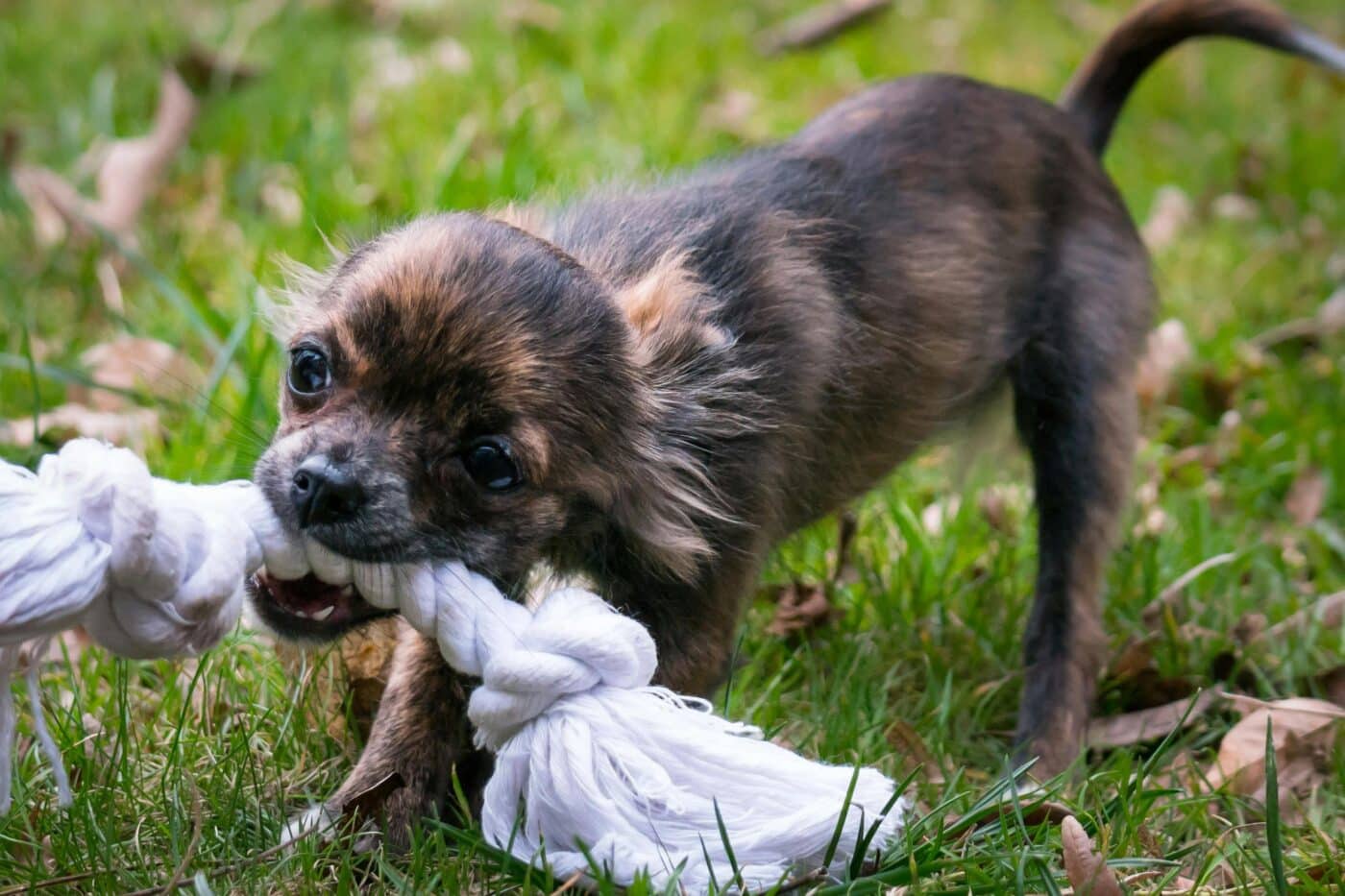
Understanding why dogs are drawn to certain toys and avoid others provides valuable insight into their unique instincts and personalities. From squeaky toys that awaken their hunting drive to plushies that offer emotional comfort, toys play crucial roles beyond simple play. These objects cater to dogs’ sensory needs, mental engagement, and emotional well-being. By choosing toys that align with your dog’s natural behaviors, you can enhance their quality of life and strengthen your bond. Whether chasing, chewing, or cuddling, each toy brings joy, stimulation, and connection to their world.
The post Science Explains – Why Dogs Love Certain Toys (Plus 2 Reasons They Don’t) appeared first on iHeartDogs.com.
